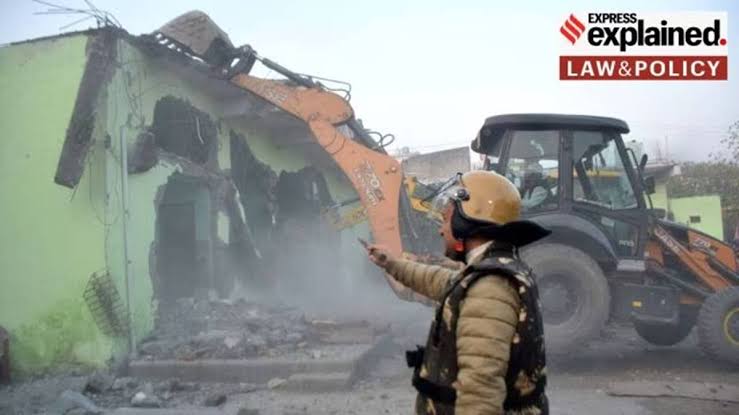Table of Contents
Unraveling the Complexities of Nazool Land
The recent eruption of violence in Uttarakhand‘s Haldwani district casts a harsh spotlight on the intricate concept of Nazool land and its profound implications. At the heart of the turmoil lies a demolition drive orchestrated by local authorities, targeting structures situated on Nazool land, notably including a mosque and a madrasa. To fully comprehend the gravity of the situation, it is imperative to delve into the historical origins, legal framework, and practical utilization of Nazool land.
Nazool Land: A Historical Legacy of Colonial Rule
Nazool land, with its roots deeply embedded in the colonial era, represents a legacy of land confiscation and redistribution wielded by British authorities. Following the cessation of British rule, these contested lands transitioned into the ownership of newly formed state governments. However, the absence of comprehensive documentation pertaining to prior ownership rendered the delineation of Nazool land a complex and contentious endeavor.
Utilitarian Allocation of Nazool Land
Governments, both at the state and local levels, exercise discretion in the allocation and utilization of Nazool land, primarily for public welfare initiatives and developmental projects. Such endeavors encompass the establishment of educational institutions, healthcare facilities, and infrastructural undertakings aimed at fostering societal progress. Concurrently, portions of Nazool land may be leased to private entities for commercial ventures or residential developments, subject to regulatory oversight and adherence to lease agreements.
The Haldwani Conundrum: Dissecting the Controversy
The epicenter of the recent upheaval in Haldwani lies within the ambit of Nazool land purportedly owned by the Municipal Council. The demolition drive, ostensibly executed in compliance with judicial directives, precipitated a cascade of events culminating in widespread unrest and tragic loss of life. However, divergent narratives and conflicting accounts pertaining to the legality, procedural adherence, and propriety of the demolition underscore the inherent complexity of the situation.
Unfolding Chaos: Chronicles of Escalating Violence
The aftermath of the demolition drive witnessed a rapid escalation of tensions, punctuated by violent clashes between aggrieved locals and law enforcement personnel. Scenes of chaos and pandemonium unfolded as projectiles were hurled, structures set ablaze, and law enforcement agencies mobilized to contain the spiraling unrest. The toll of casualties, injuries, and infrastructural damage served as grim reminders of the profound repercussions unleashed by the tumultuous events.
Governmental Response and Accountability
In the wake of the crisis, governmental authorities swiftly mobilized to quell the unrest, implementing stringent measures such as curfews, deployment of additional security forces, and issuance of shoot-on-sight directives. Nevertheless, lingering questions pertaining to the proportionality of the response, adherence to due process, and accountability in the face of alleged excesses remain contentious issues warranting thorough scrutiny and impartial adjudication.
Dispelling Communal Narratives: Pursuit of Objective Truth
Amidst the cacophony of communal discord, assertions by local officials, notably Nainital district magistrate Vandana Singh, emphatically repudiate the notion of religious animosity fueling the violence. Advocating for a nuanced understanding and steadfast commitment to impartial investigation, such voices underscore the imperative of refraining from communal polarization and fostering communal harmony in the pursuit of justice and reconciliation.
Calls for Restraint and Judicial Review: Navigating the Path Forward
As the dust begins to settle on the charred remnants of unrest, calls for restraint, sobriety, and adherence to legal recourse resonate with increasing urgency. The forthcoming judicial proceedings, slated to scrutinize the legality and procedural integrity of the demolition, hold the promise of illuminating the path forward and engendering a semblance of closure amidst the prevailing turmoil.
Conclusion: Charting a Course Towards Reconciliation and Renewal
The tumultuous events unfolding in Haldwani serve as a stark reminder of the intricate interplay between historical legacies, administrative prerogatives, and communal dynamics in shaping the contours of contemporary social upheaval. As the region grapples with the aftermath of violence, the imperative of fostering dialogue, accountability, and reconciliation looms large on the horizon, beckoning stakeholders to transcend the divisive rhetoric and chart a collective course towards healing and renewal.
